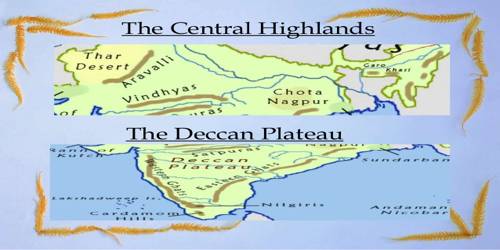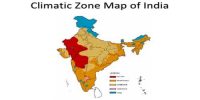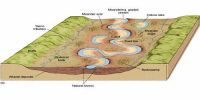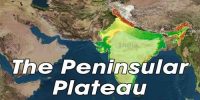The Central Highlands of Peninsular Plateau
The Peninsular plateau is a tableland. It is composed of the old crystalline, igneous and metamorphic rocks. Rising from the height of 150 m above the river plains up to an elevation of 600-900 m is the irregular triangle known as the peninsular plateau. The Peninsular Plateau is one of the oldest landforms of earth.
Features of the Peninsular Plateau –
- generally triangular in shape with its base coinciding with the southern edge of the great plain of North India.
- It covers a total area of about 16 lakh sq km (India as a whole is 32 lakh sq km).
- The average height of the plateau is 600-900 m above sea level (varies from region to region).
- Most of the peninsular rivers flow west to east indicating it’s a general slope.
Central Highlands is bounded to the west by the Aravali range. Central Highlands is also called the Madhya Bharat Pathar or Madhya Bharat Plateau. Central Highlands in India are made of the Malwa Plateau, Deccan Plateau, and Chota Nagpur Plateau. The Satpura range is formed by a series of scarped plateaus on the south, generally at an elevation varying between 600-900 m above the mean sea level. These highlands have been formed by the disjunctive ranges of the Satpura and Vindhya Hills. This forms the northernmost boundary of the Deccan plateau. It is a classic example of the relict mountains which are highly denuded and form discontinuous ranges. Central Highlands in India can be defined as a bio-geographic zone. The extension of the Peninsular plateau can be seen as far as Jaisalmer in the West, where it has been covered by the longitudinal sand ridges and crescent-shaped sand dunes called barchans. This region has undergone metamorphic processes in its geological history, which can be corroborated by the presence of metamorphic rocks such as marble, slate, gneiss, etc.

Central Highlands:
- The part of Peninsular plateau lying to the north of the Narmada river covering with a measured area of Malwa plateau is known as the Central Highlands.
- The Vindhyan range is bounded by the Central Highlands on the south and the Aravali on the Northwest.
- The Central Highlands are wider in the West but narrower in the East.
The general elevation of the Central Highlands ranges between 700-1,000 m above the mean sea level and it slopes towards the north and northeastern directions. Most of the tributaries of the river Yamuna have their origin in the Vindhyan and Kaimur ranges. Banas is the only significant tributary of the river Chambal that originates from the Aravalli in the west. An eastern extension of the Central Highland is formed by the Rajmahal hills, to the south of which lies a large reserve of mineral resources in the Chotanagpur plateau.















